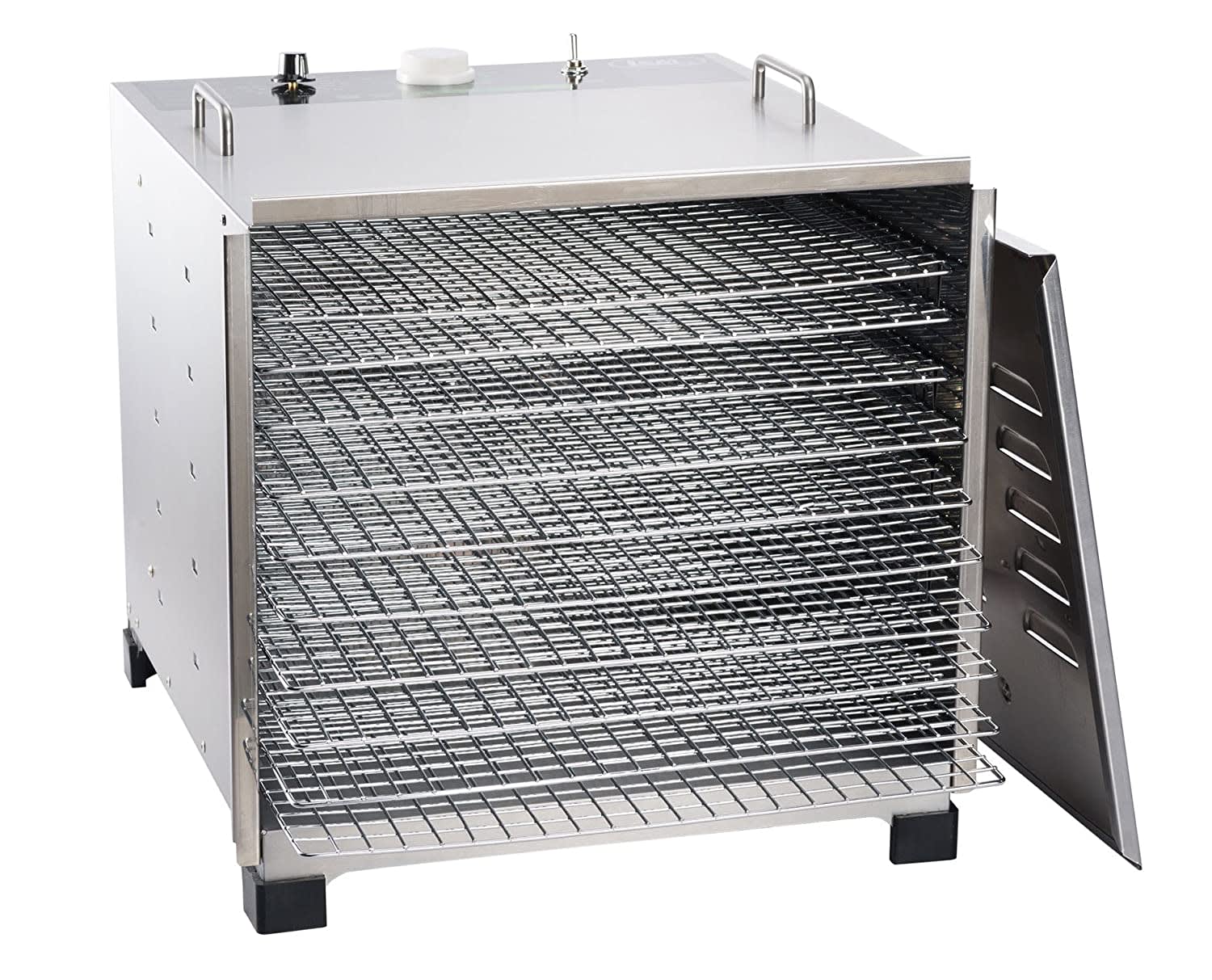Is It Time to Buy a Food Dehydrator?

1. Weston 10-Tray
What is important with a dehydrator? Even air circulation! That is a key part that makes the Weston 10-Tray box-style model great for dehydrating your fruit and vegetables, as well as for making perfect jerky. The ten trays are non-stick for easier cleaning and the temperature ranges from 84degrees to 155 degrees for perfect dehydrating and jerky making thanks to a 620-watt heating element.
2. LEM Big Bite - Editor's Pick
LEM brings you commercial-quality products at consumer-level pricing. The Big Bite is a stainless steel, ten-tray box dehydrator. It has ten, chrome-plated iron trays that clean up well and offers you 16-square feet of space for fruit, meat, vegetables and more. Digital controls make dehydrating food easy and painless. With a machine like the Big Bite, you can make a pile of venison jerky all while watching a John Wayne marathon. Sounds like a good plan to us, pilgrim!
3. Cabela's Harvester Pro
Cabela’s Harvester Pro 5-tier dehydrator is perfect for smaller jobs, like small-batch jerky. It is smaller, yet has 786 cubic-inches of drying space on the five easy-to-clean trays. This dehydrator has a 750W heater with a top-mounted fan that forces the heated air downward and sideways through the patent-pending airflow chambers within the trays. This helps to give the Harvester Pro even drying, a major factor in selecting a dehydrator. The LED controls make it easy to set the temp from 90°–160°F for a run time up to 23 hours.
4. NESCO Snackmaster Pro
When you want to dip your toes into the dehydrating world, a good place to start is with the NESCO Snackmaster. This economical stack-style dehydrator comes with 5 trays but is expandable to 12. It has a digital timer and it’s powerful fan creates a pressurized interior to evenly prepare your food. This is the perfect dehydrator to get started with and it is one of the more popular units sold.
5. Silicone Sheets
Regardless of what dehydrator you use, these mesh silicone sheets can help make things easier to clean up. Made from non-stick silicone material, these mesh sheets can be cut to fit any tray. Making it easier to clean up, especially after notoriously messy things like fruit, these sheets measure 14-inches square and come five to a package. Can be cleaned and reused.
Types of food dehydrators
There are two basic types of dehydrators – stacked and box. Stacked dehydrators are usually devoid of an outer shell. The unit is made up of racks, each “stack” consisting of a tray for keeping foods and vents on the circumference. These stacks when placed atop each other, can be sealed such that heat does not escape the dehydrator. The fan is placed at the bottom and circulates the air in a vertical direction. The benefits are that the units are smaller and the size varies according to volume of foods.The main disadvantage is that the food closest to the heating element dries faster and periodic shuffling of racks is mandatory.
Box dehydrators have removable trays and work like electric ovens. The trays are inserted in a predetermined fashion and a fan at the back of the box blows hot air through the foods on each tray. These have better insulation and all of the trays receive equal amounts of heat. However they tend to be larger and take up more space.
A few quick and easy dehydrator recipes
Here’s a couple we use around our house often. Get some plums, whether from your own tree or fresh from the farmer’s market. Slice them in half, pit them and then sprinkle a healthy dose of sugar. Put them in the dehydrator on low heat and run until they are nice and gooey. This is a sweet treat that will have everyone fighting over who gets them, and no one will know until later that you’re getting a serious dose of fiber too.
Goose jerky is another easy one. Save up your limit of goose breast and use some HiMountain Seasonings Goose Jerky Cure. Goose jerky is simple to make and is another one everybody will be fighting to get.
Apple slices are something you can do better at home than any store can do because you can select your favorite apple variety. The really juicy apples, like Honeycrisp, don’t work as well, but others, like Zestar and Rubymac work great. All you need to do is slice and dry.
What can I do with a food dehydrator?
Good question. The obvious answer is you can make jerky out of virtually any meat. Dehydrated meat jerky is probably the oldest form of food preservation known to man. Fruits also do well with dehydration. Dried cranberries, cherries, pineapple and apples have been a staple of trail mix variations for ages, and are a nutritious way to preserve perishable items.
We are committed to finding, researching, and recommending the best products. We earn commissions from purchases you make using the retail links in our product reviews. Learn more about how this works.











